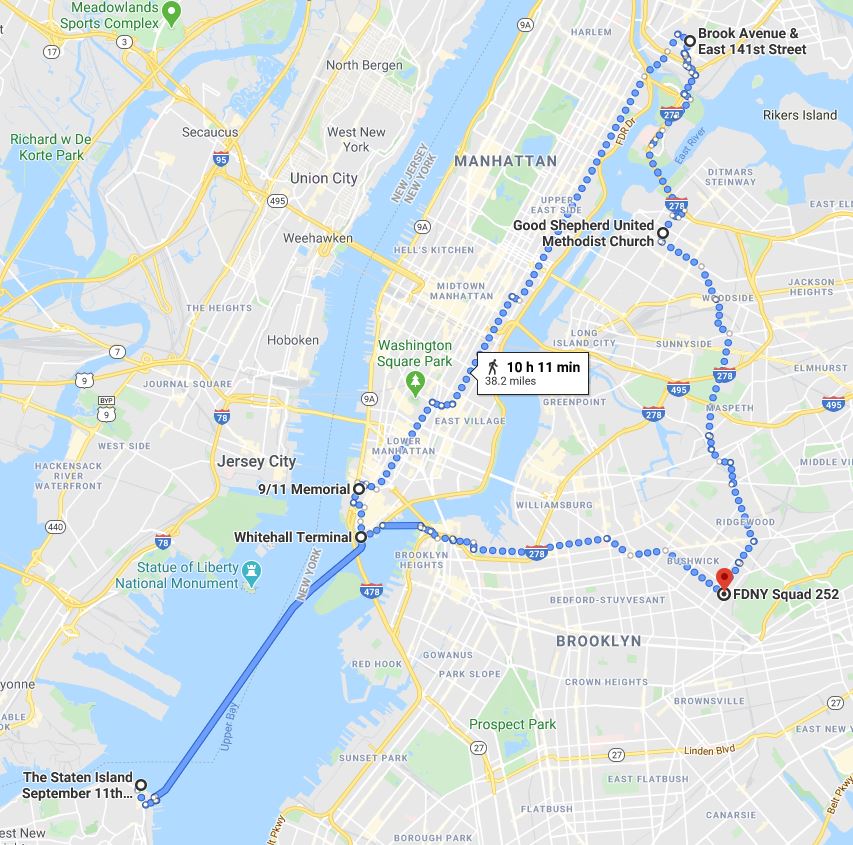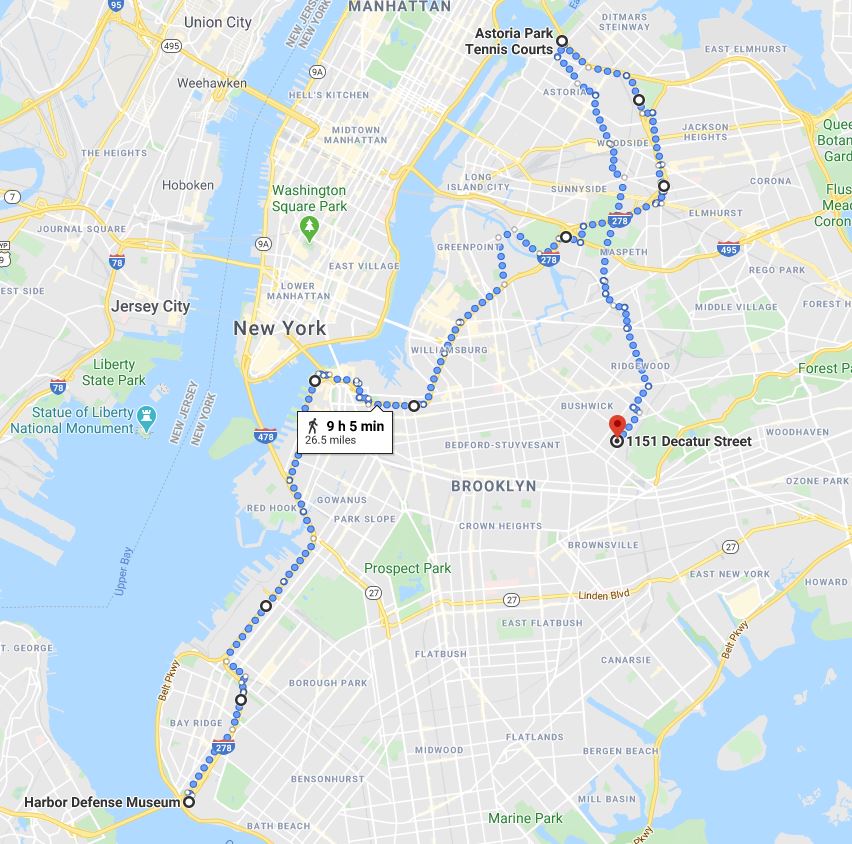Brooklyn Navy Yard
Week 51
9/11: In Memoriam
Week 51
9/11: In Memoriam
Our penultimate walk has the distinction of being the only one to touch all five boroughs. The same can be said of this week's focus: the terrorist attacks of September 11th, 2001. This route visits memorial sites in all five boroughs - some grand and others understated. Note it is the only route to use transit during the course of the walk (the Staten Island ferry) though the walking distance of 26.2 miles is still maintained.
Week 46
In Pursuit of Freedom
Week 46
In Pursuit of Freedom
In 1790, 61% of all white Households in Kings County owned slaves, representing 30% of the borough's total population. This was enough to earn it the ignominious distinction of "the highest proportion of slaveholders and slaves in the North." Our walk this week covers the grounds of Canarsie and the Flatlands where many of these slaves resided, along with the courageous and vibrant abolitionist history of Brooklyn Heights, Williamsburg and Weeksville. We'll also step into Manhattan to visit the African Burial Ground National Monument near City Hall.
Week 32
The Native Roads
Week 32
The Native Roads
Back in 2015, Heather Quinlan at Brooklyn Heights Blog stumbled upon a rather exciting map at the Brooklyn Historical society. Published in 1946 by historian James A. Kelly, it details all the Native America trails that cover the borough and their contemporary counterparts. This week we'll walk those existing routes, with a trip down Kings Highway, a walk along Shore Road, and up Division Avenue, among other paths. We'll also visit the peculiar Gravesend Square and the city's oldest cemetery.
Week 28
Following the BQE
Week 28
Following the BQE
Few major thoroughfares define its surroundings as strongly as the section of I-278 known as the Brooklyn-Queens Expressway. This week we'll follow the entirety of its path, starting at the foot of the RFK bridge in Astoria and concluding at the base of the Verrazzano. Neighborhoods along the way include Woodside, Sunnyside, Williamsburg, Brooklyn Heights, Sunset Park, Bay Ridge and more.




